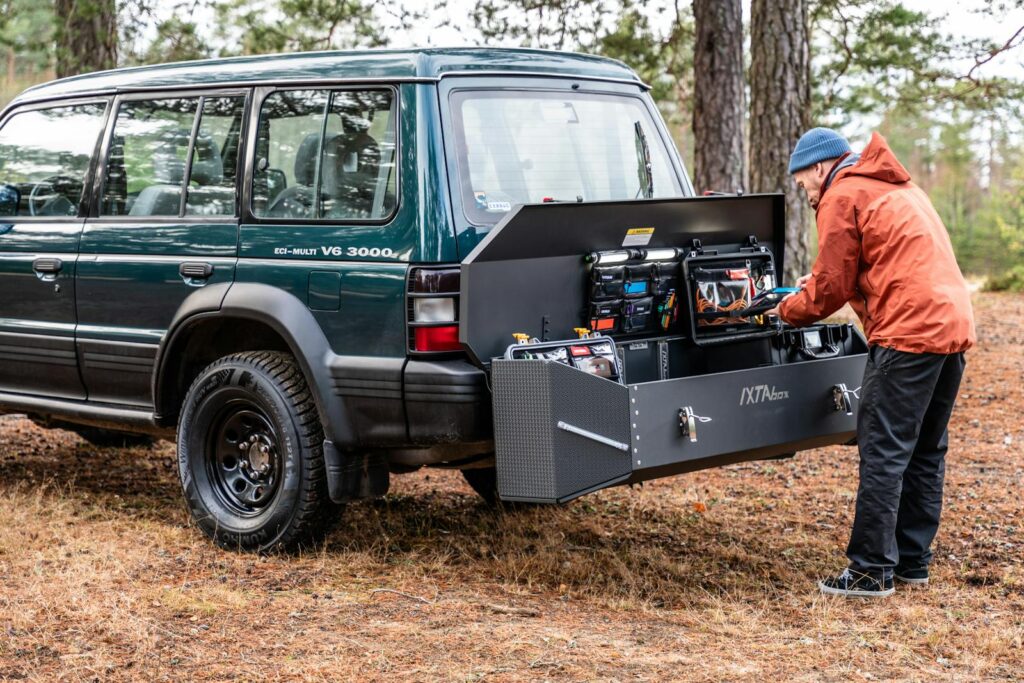Depending on your perspective, negotiating the price of a new car is either a time-honored tradition or an annoying back-and-forth process that must be endured. However you view it, this vital interaction can potentially shave thousands off the price of a new vehicle, making it a skill well worth cultivating. Rather than feeling overwhelmed or unprepared, imagine approaching the dealership with confidence, armed with knowledge that puts you in the driver’s seat.
Successfully navigating the car-buying journey hinges significantly on the homework you do before ever setting foot in a showroom or engaging in online chats. The key to feeling more confident and comfortable with the entire process lies in robust preparation. It’s about understanding the market, knowing your financial boundaries, and recognizing the tactics that can empower you as a consumer.
We are here to help you unlock the secrets of savvy car negotiation, drawing on insider tips to equip you for success. From setting your personal budget to understanding complex pricing terms and strategically planning your purchase, let’s dive into the crucial steps that will ensure you get the best possible price on the car you desire, transforming a potentially stressful experience into an empowering one.

1. **Set Your All-In Budget**
Buying a new or used car represents one of the most substantial financial commitments many people will make in their lifetime. Without a clear understanding of what you can genuinely afford, you become susceptible to the persuasive tactics designed to encourage upgrades or overpaying. Establishing a firm, realistic budget before you even begin to browse vehicles is your first and most critical defense against buyer’s remorse.
An excellent starting point for this crucial step is the widely recognized “20/4/10 rule.” Ideally, you should aim to put 20% down on a new car, which can include the value of a trade-in. The associated loan for this purchase should not exceed four years in duration, and your total monthly payments for the vehicle should remain below 10% of your take-home pay. You can utilize an online car payment calculator to plug in these numbers and gain a precise understanding of your spending capacity.
As you embark on these calculations, it is absolutely essential to factor in an estimate for the “out-the-door” price. This isn’t merely the Manufacturer’s Suggested Retail Price (MSRP) you might see advertised on an automaker’s website. The MSRP typically omits critical elements like taxes and various fees, which can accumulate rapidly and add several thousand dollars to the overall cost, significantly impacting your actual budget.
While the 20/4/10 rule offers a robust guideline, remember that every individual’s financial situation and priorities differ. Just because a formula suggests a certain spending limit doesn’t mean you are obliged to reach it. Some buyers might prefer to allocate more funds towards debt reduction or savings, while others might prioritize a higher-end vehicle because they spend less on other discretionary items. Your budget should ultimately align with your personal preferences and broader financial goals, always considering that “monthly transportation costs include the loan payment plus insurance, gas, and auto maintenance.”
Read more about: Navigating the Digital Canvas: A Comprehensive Review of Top Web Design Software for Modern Creators

2. **Get Pre-Approved Financing**
Securing your financing before you approach a dealership offers two powerful advantages that will significantly strengthen your negotiating position. This proactive step not only clarifies your financial boundaries but also provides invaluable leverage that can lead to a better deal. It’s a move that demonstrates your preparedness and seriousness as a buyer, shifting the power dynamic in your favor from the outset.
The first distinct advantage of pre-approved financing is the ability to challenge the dealer’s offerings. Once you have a loan lined up from your bank or credit union, you can confidently inform the salesperson that you are already equipped with financing. This allows you to directly ask them to beat the interest rate you’ve been offered, forcing them to compete for your business rather than dictating terms. It sets a clear benchmark they must surpass.
Secondly, pre-approval acts as a firm, undeniable limit on your budget. If your pre-approved amount is, for instance, $30,000, this figure intrinsically removes any temptation to overpay for a higher trim level or additional options that you might not genuinely need or originally intend to purchase. It provides an objective ceiling, protecting you from emotional decisions driven by the excitement of a new car.
Furthermore, the context highlights that “buying a car with cash doesn’t always give you the upper hand in negotiations” for new cars, as “dealerships may receive incentives from car manufacturers when a shopper uses the automaker’s financing arm.” However, with pre-approved financing from your own institution, “you can step inside the dealership as if you were paying with cash.” This critical strategy allows you to “concentrate on the price of the car and avoid getting lost in confusing financing details,” ensuring that your focus remains squarely on securing the best vehicle price rather than getting entangled in complex loan discussions prematurely.
Read more about: Your Definitive 2025 Guide: What to Check When Buying a Used Electric Vehicle

3. **Understand Key Pricing Terms**
Navigating the car-buying landscape effectively requires a solid grasp of the terminology associated with vehicle pricing. Dealerships operate with specific terms that, if unfamiliar to you, can create confusion and disadvantage during negotiations. Before you even think about engaging in a price discussion, arm yourself with the definitions of these key concepts to ensure you are speaking the same language as the dealer.
The most commonly encountered term is the MSRP, or Manufacturer’s Suggested Retail Price. This is essentially the “sticker price the automaker sets for each model based on its trim and equipment.” While it serves as a traditional starting point for negotiations, it’s important to remember that “dealerships may advertise prices below or above the MSRP, depending upon the demand for a particular model or their sales goals.” This figure is prominently displayed on the “Monroney” label affixed to the car’s window, mandated by federal law.
Moving beyond MSRP, you’ll want to understand the Invoice Price. This represents “the price that the dealership had to pay to the automaker to buy the car.” While you’ll likely never know the exact invoice price, diligent research can provide a ballpark estimate. The ideal negotiation scenario aims for a final price that falls somewhere “between the MSRP and invoice price,” allowing the dealer a reasonable profit while securing a fair deal for you.
Another term to be aware of is Dealer Holdback, which is described as “a bonus that the automaker pays to the dealer after the car is sold.” This is typically a small, set percentage of either the MSRP or the invoice price. Additionally, you will encounter the Destination Fee, a non-negotiable charge that covers the cost of transporting the vehicle from the factory to the dealership. Understanding these fixed costs helps you differentiate them from other, more flexible charges.
Finally, be prepared for “Other Fees” such as “documentation fees, advertising fees, preparation fees or market adjustment fees.” While some fees like sales tax and DMV registration (TTL fees) are unavoidable, the good news is that “most of these are negotiable.” It’s always worth attempting to reduce what you have to pay for these particular line items, ensuring you’re not paying for unnecessary or inflated charges that can easily be challenged with your newfound knowledge.
Read more about: Navigating the 2025 SUV Landscape: Kelley Blue Book’s Expert Guide to the Best Two-Row Models for Suburban Families

4. **Research Your Target Vehicle and Local Prices**
Once your budget is firmly established, the exciting part begins: narrowing down your choices to find the perfect model that aligns with your needs and desires. This phase of research is not just about identifying a car; it’s about building a robust case for your desired price by understanding the market dynamics surrounding that vehicle. A little digital legwork here can translate into significant savings later.
Begin your exploration by checking for available car deals. “Almost every manufacturer runs special offers on a variety of models every month,” encompassing everything from EVs to SUVs and trucks. These promotions can include “deals for both leases and financing, sometimes plus cash and bonus offers.” It’s crucial to look for offers specific to particular trim levels or options that match your interest. “We round up dozens of the best offers each month so you don’t have to search every car maker’s website for their latest deals.” Also, keep an eye out for special offers during three-day holiday weekends.
Next, make full use of the online configurator tools provided on each automaker’s website. This interactive feature allows you to “build your dream car that fits in your budget,” letting you select colors, trims, and various options. More importantly, it provides transparency on the cost of each addition, helping you discern “Are they standard equipment that add no cost to the car? Are they stand-alone options or part of a package?” Knowing these prices empowers you when it’s time to negotiate.
To ensure you’re getting a competitive offer, compare local prices for similar models from several dealerships in your vicinity. Online vehicle listings provide an excellent platform for this. Having multiple options isn’t just about finding the car; it’s about creating competition. “Having options means you can select the model that best balances your needs and budget and can provide you with extra ammunition when negotiating because you can have the dealerships compete with each other for your business.”
Beyond comparing specific dealer listings, understanding the car’s fair market value is paramount. Utilizing a “car valuation tool,” such as those provided by reputable sources like Kelley Blue Book, will help you “determine an estimated average price range for the vehicle that interests you.” This foresight provides a solid target price, giving you a firm basis “to stand on before negotiating begins.” Remember that “supply and demand principles play into the car-shopping environment,” meaning popular or hard-to-find models might offer less wiggle room for negotiation, whereas a car sitting on a lot for a while could be more negotiable.
Read more about: Navigating a Total Loss: Your Comprehensive Consumer Guide to Car Accidents and Insurance Settlements

5. **Get a Value for Your Trade-In**
When it comes to your current vehicle, the path of least resistance often seems to be trading it in at the same dealership where you’re purchasing your new ride. However, taking this easy route could mean you’re “leaving money on the table.” To maximize the value of your trade-in, it’s a strategic move to solicit offers from several different sources, ensuring you have multiple benchmarks to work with.
There are numerous online platforms where you can obtain instant cash offers for your car. By simply inputting some basic information about your vehicle, you can quickly receive a preliminary valuation. This process is straightforward and provides you with tangible offers before you ever engage in discussions at the dealership, giving you a strong position.
These external offers are not just for selling your car elsewhere; they are powerful negotiation tools. “Then, you can either choose to sell your car to the company that made you the offer or, at the very least, use that offer as a tool to help you get more from the dealership where you do the transaction.” This means you walk into the dealership not hoping for a good trade-in value, but demanding one, backed by concrete evidence of what your car is worth on the open market.
By having these offers in hand, you effectively separate the trade-in negotiation from the new car purchase. This prevents the dealer from bundling the two transactions in a way that might obscure the true value of your trade-in or inflate the price of the new vehicle. It ensures transparency and allows you to optimize both sides of the deal independently.
Read more about: Your Ultimate Checklist: 14 Essential Things to Examine During Your Used Car Test Drive

6. **Time Your Purchase Strategically**
Believe it or not, the calendar can be your ally in car negotiations. There are certain periods when dealerships and salespeople are more motivated to make a deal, offering you a greater opportunity to secure a favorable price. Scheduling your negotiation during these optimal times can significantly impact your potential savings and overall outcome.
One of the most frequently cited prime times for negotiation is the end of the month. Salespeople and dealerships alike operate with monthly sales goals, and as the deadline approaches, their eagerness to close a few more sales can translate into greater flexibility in pricing. If they need to hit a quota, they might be more willing to drop prices to make the deal happen. Furthermore, if you can arrange your visit for a Monday, that’s even better, as “it’s a calmer scene, and you’ll have time to negotiate with less pressure.”
This principle extends beyond monthly targets to annual goals as well. “Just as the end of the month is a good time for negotiations, so is the end of the year.” Dealerships are looking to clear inventory and meet yearly objectives, making them more amenable to lowering prices to secure a sale. This is often when you’ll find some of the most competitive deals.
Beyond monthly and yearly deadlines, keep an eye out for seasonal sales events and promotions, especially those clustered around national holidays. Manufacturers and dealerships often roll out special incentives during these periods to attract buyers. “If you have some flexibility when shopping for a car, timing your purchase can save you more money than you might think.” Being patient and strategic about when you engage in negotiations can truly pay off, ensuring you’re not just buying a car, but buying it at the best possible moment.
The initial groundwork you lay is undeniably critical, but the true test of your preparedness comes when you engage directly with the dealership. This next phase is where your research translates into real savings, as you navigate the intricacies of negotiation and ensure every detail of your purchase aligns with your financial goals. By approaching this stage with confidence and a clear strategy, you can secure the best possible deal and avoid common pitfalls. Let’s delve into the advanced tactics that will put you in the driver’s seat during the negotiation and finalization process.
Read more about: Don’t Get Fooled: 13 Supermarket ‘Deals’ You Might Want to Skip for Better Quality & Savings
7. **Choose Your Negotiation Venue: Online or In-Person**
Deciding how and where to negotiate the price of your new car can significantly impact the outcome. The optimal approach often depends on your specific circumstances and how precisely you know the vehicle you want. Understanding these nuances allows you to leverage the sales environment to your advantage, whether you prefer the comfort of your home or the direct interaction of a showroom.
If you have a very clear vision—knowing the exact make, model, trim, and even specific options you desire—then negotiating online can be your most efficient and powerful strategy. This method allows you to contact multiple dealerships through their websites, clearly stating your interest in a specific car and inviting them to compete for your business by offering their best price. It minimizes face-to-face pressure and provides ample time to review offers at your leisure.
Conversely, if your preferences are a bit more flexible—perhaps you have a few models in mind, are open to different options, or have a strict budget limit that requires careful adjustment—an in-person negotiation might be more suitable. Being at the dealership allows you the flexibility to physically assess vehicles, add or remove options on the fly, or even consider dropping down a trim level to ensure you stay within your financial boundaries. This direct interaction facilitates a more dynamic and adaptable negotiation process.
For those who appreciate the benefits of both worlds, a hybrid approach, often referred to as the ‘negoti-auction,’ can be highly effective. You can visit a few dealerships to take test drives, gather information, and let salespersons know you are actively shopping around. Once you’ve identified the specific car you want, you can then contact those same dealerships, or others, through their websites to request competitive bids, leveraging the test drive experience without committing to an immediate, high-pressure negotiation.

8. **Negotiate the Total Price, Not the Monthly Payment**
One of the most critical pieces of advice in car negotiation is to always focus on the total ‘out-the-door’ price of the vehicle, rather than allowing the conversation to revolve around monthly payments. Salespeople are adept at manipulating monthly payment figures by adjusting the loan term or applying inflated interest rates, which can ultimately lead you to pay significantly more over the life of the loan without realizing it.
Your primary objective should be to secure a firm, final price for the car itself, inclusive of all non-negotiable fees like destination charges, before any discussion of financing begins. Once this crucial total price is agreed upon, you can then use an online car payment calculator, armed with your pre-approved interest rate, to accurately estimate what your monthly payments will be. This approach ensures transparency and prevents hidden costs from being masked by seemingly attractive low monthly figures.
When you initiate negotiations, be direct and assertive, demonstrating that you’ve done your homework. A strong opening line such as, “Based on my research, a fair price for this car in our area is [the price you determined from your research]. Let’s start there and see if we can work toward a final out-the-door price,” immediately signals your preparedness. This statement sets a clear benchmark and lets the dealer know you are an informed buyer ready for a serious discussion.
By anchoring your negotiation to the total vehicle price, you maintain control and protect yourself from common dealer tactics designed to shift focus away from the bottom line. This strategy ensures that every dollar you agree to spend is transparent and directly tied to the value of the car, rather than being obscured by financial gymnastics that could lead to an unexpected increase in your overall expenditure.
Read more about: Navigating the 2025 Car Warranty Changes: A Consumer Reports Guide to Protecting Your Used Car Investment

9. **Separate Your Trade-In Negotiation**
To truly maximize your savings, it is imperative to treat your trade-in as a completely distinct transaction from the purchase of your new vehicle. Combining these two elements into a single negotiation provides the dealership with an opportunity to manipulate figures, potentially obscuring the true value they are offering for your trade-in or inflating the price of the new car to compensate.
Your strategy should be to finalize the ‘out-the-door’ price of the new car, securing a firm agreement before you even introduce your current vehicle into the discussion. This disciplined approach ensures that the new car’s price is locked in based on its standalone value, preventing any cross-contamination of figures that could lead to you leaving money on the table.
Once you have a firm handshake or written agreement on the new car’s price, this is the opportune moment to introduce your trade-in. Crucially, you should arrive armed with multiple offers you’ve already received for your current vehicle from independent sources, such as online instant cash offer platforms. These concrete valuations serve as powerful leverage.
With these external offers in hand, you can confidently tell the dealership, “Okay, I’m comfortable with that price. Now, I have a trade-in I’d like to discuss. I already have a cash offer for [amount]. Can you beat that?” This clear statement forces the dealer to either match or exceed your best existing offer, effectively making them compete for your trade-in business rather than dictating its value.
Read more about: Unlock Your Car’s True Value: 10 Essential Trade-In Tactics to Outsmart Dealerships and Maximize Profit

10. **Navigate the Finance and Insurance (F&I) Office**
After successfully negotiating the vehicle’s price with the salesperson, you’ll enter the Finance and Insurance (F&I) office. This stage, while seemingly a formality, requires continued vigilance. By this point, you might be tired or simply eager to finalize the purchase, but it’s precisely when you need to remain sharp, as this office handles financing, insurance, and various additional upsells that can quickly inflate your agreed-upon price.
Be prepared for the F&I manager to suggest extra amenities or services. These might include items like window tinting, nitrogen-filled tires, paint protection packages, or rustproofing. While some might seem appealing, it’s vital to recognize that these extras are almost always significantly cheaper if purchased and installed elsewhere, outside of the dealership. Politely decline these additions if they weren’t part of your original plan, as they can add hundreds, if not thousands, of dollars to your total cost for minimal benefit.
Similarly, extended warranties and gap insurance are common offerings in the F&I office. While gap insurance is important to have, it doesn’t need to come from the dealer. You can often obtain more affordable gap coverage through your own insurance company, often at a fraction of the dealership’s price. For extended warranties, consider that many buyers never fully utilize them, making them a potentially unnecessary expense. Evaluate your needs carefully and remember that if your vehicle is new, it already comes with a manufacturer’s warranty.
When faced with these add-on propositions, a simple and firm response is your best defense. You can calmly state, “Thank you for the offer, but I’d like to stick with the agreed-upon price for the vehicle only.” This clear boundary setting ensures that your final purchase aligns precisely with the negotiations you’ve already completed at the sales desk, preventing any unwelcome surprises.
Your pre-approved financing becomes a significant asset in the F&I office as well. Since you already have an interest rate secured from your bank or credit union, the dealership’s finance team must strive to beat that rate to earn your financing business. If they can’t offer a more competitive rate, you simply proceed with the financing you’ve already arranged, ensuring you get the best possible terms without getting lost in complex or disadvantageous loan details.

11. **Master the Art of the Walk-Away**
Negotiating for a car can be a marathon, not a sprint, and maintaining your composure throughout the process is paramount. You’ve diligently researched, established your budget, and armed yourself with crucial market values. This preparation gives you a significant advantage, but it’s easy to let frustration or the excitement of a new car cloud your judgment, potentially leading you to rush and overpay. Remember, the salesperson is a trained professional, and they often capitalize on buyer emotions.
For those who find face-to-face negotiations particularly stressful, online channels offer a calmer alternative. Utilizing chat, email, or text allows you to engage with dealerships from the comfort of your home, providing ample time to consider each offer and formulate a thoughtful response without feeling pressured. This digital distance can be a powerful tool for maintaining objectivity and control over the pace of the discussion.
However, whether you’re negotiating online or in person, the ultimate power play in any car deal is your willingness to walk away. If a salesperson becomes overly pushy, if you feel there’s a lack of transparency, or if the numbers simply aren’t meeting your carefully researched expectations, do not hesitate to politely end the negotiation. Even in times of limited inventory, there are almost always other vehicles and other dealerships.
Often, the act of calmly and politely leaving can prompt a dealership to reconsider their offer, with a representative reaching out shortly after with a more favorable deal. This tactic underscores that you are a serious buyer, but one who will not be taken advantage of. Remaining objective and ready to explore other options ensures you secure the car you want at the price you’re willing to pay, walking away satisfied and confident in your decision.
Read more about: Maximize Your Deal: 10 Actionable Steps to Sell Your Car to a Dealer for Hundreds More

12. **Meticulously Review All Final Paperwork**
The very last step in your car-buying journey, and arguably one of the most critical, is the meticulous review of all final purchase paperwork before signing anything. This stage is your final line of defense against unexpected charges, errors, or any terms that deviate from what you’ve painstakingly negotiated. Even seasoned car buyers can overlook details, so vigilance here is non-negotiable.
Carefully examine every line item on the purchase order and any associated documents. Confirm that the agreed-upon purchase price for the vehicle is accurate, and if applicable, that the trade-in value matches what was settled. Be particularly wary of any additional fees or extras that might have mysteriously appeared, such as unexpected ‘preparation fees’ or ‘market adjustment fees’ that were not part of your earlier discussions. If you spot anything unfamiliar, question it immediately and demand a clear explanation.
Bringing a trusted family member or friend to the dealership for this final review can be an invaluable asset. A second pair of eyes, especially from someone who can remain objective and isn’t caught up in the excitement of the purchase, can spot discrepancies or raise questions that you might miss. This companion acts as a voice of reason, helping you evaluate whether new charges are truly necessary or simply dealer add-ons you can decline.
Do not sign anything until you fully understand and are comfortable with every single clause and every figure presented in the agreement. This includes scrutinizing extended warranty contracts, gap insurance policies, and any other products offered in the F&I office. Ensure all fees listed were explicitly discussed and agreed upon during your negotiations. If any new costs surface at this point, or if you feel pressured, remember your ultimate power: the ability to walk away and find a more honest dealership.
Read more about: Master Distiller: The Most Misunderstood Title in Whiskey, And What Industry Insiders *Really* Wish You Knew
Successfully negotiating a car deal is a testament to the power of preparation, diligence, and unwavering patience. By embracing these insider tricks—from setting a realistic budget and securing financing to mastering negotiation tactics and meticulously reviewing every piece of paper—you transform a potentially daunting process into an empowering one. Remember, you are not just buying a car; you are investing in your financial well-being and peace of mind. Approach the dealership armed with knowledge and confidence, and you will drive away with a deal that truly puts you in control of the road ahead.




